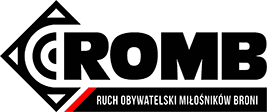Performance analysis of mobility protocols and handover algorithms for IP-based networks
Performance analysis of mobility protocols and handover algorithms
for IP-based networks
Jozef WOZNIAK, Przemysław MACHAŃ, Krzysztof GIERŁOWSKI, Tomasz GIERSZEWSKI, Michał HOEFT, Michał LEWCZUK
Gdańsk University of Technology, Faculty of Electronics, Telecommunication and Informatics
A rapid growth of IP-based networks and services has created the vast collection of resources and functionality available to users by means of a universal method of access – an IP protocol. At the same time, advances in design of mobile electronic devices have allowed them to reach utility level comparable to stationary, desktop computers, while still retaining their mobility advantage. Following this trend multiple extensions to the base IP protocol stack have been developed, devoted to user mobility support. In this paper we present a short overview of the most popular methods of handling mobility in IPv4 and IPv6 networks, along with their overall performance analysis and comparison. Critical performance issues of IP mobility mechanisms are presented, as well as optimizations proposed in standardized solutions.
-
Introduction
During the last decade, two dominant technology trends can be observed. The first one is the Internet – an easily accessible internetwork offering numerous services based on a single network protocol – the Internet Protocol (IP). This trend, commonly called “All-IP” approach, results in a universal way in which services are provided to remote users.
The second one is mobility and is mostly stimulated by advances in design and development of portable electronic devices allowing them to reach utility level comparable to stationary, desktop computers, while retaining their mobility advantage. Unfortunately, mobility in IP networks brings a number of problems which need to be solved if IP-based services are to be offered to end-users with satisfactory quality. Mobile users need to communicate without interruption while moving across different access networks, which results not only in the necessity to change points of physical network access (handover) but also in probable changes of users IP addresses.
According to the OSI model, the mobility can be addressed by two classes of solutions: mobility assisted by low layer mechanisms (typically ISO-OSI Layer 2 solutions) and mobility in the network layer (ISO-OSI Layer 3). Network layer mobility, based on the IP protocol, is more universal than the lower layer solutions because it is not technology-dependent and can be deployed in heterogenic environments. On the other hand, Layer 2 mobility outperforms the IP-based solutions due to the access to much more information useful in mobility support. Both mentioned mobility solutions are independent from each other and may be applied simultaneously. Layer 2 mobility is useful in scenarios covering relatively small geographical area, as it is strictly limited to one network technology and thus may be classified as a micro-mobility. From the networking point of view, this kind of mobility is suitable for one broadcast domain (although is also used in emulated broadcast environments like WiMAX which is connection-oriented). IP-based mobility, on the other hand, can be used to widen the potential area of host mobility and thus can be classified as a macro-mobility solution. Still, the IP-based solutions also address the issues of micro-mobility. Extended discussion on micro- and macro-mobility is presented in Section 4.
This paper presents IP-based mobility in IEEE 802.11 environment along with several performance optimization proposals. In Section 2 we provide definitions of basic terms and general handover taxonomy. The following two sections are dedicated to more detailed description of the most popular standardized solutions for Layer 2 (Section 3) and Layer 3 (Section 4) handovers, completed with performance analysis, examination of common problems and most prominent optimization proposals. Section 5 describes cross-layer approach to handover, integrating Layer 2 and Layer 3 mobility mechanisms. The paper ends with Section 6 containing final conclusions.
Full article avilable only in printed version. Information Systems Architecture and Technology, Service Oriented Networked Systems, Oficyna Wydawnicza Politechniki Wrocławskiej, Wrocław 2011, p. 234-266 ISBN 978-83-7493-631-6


